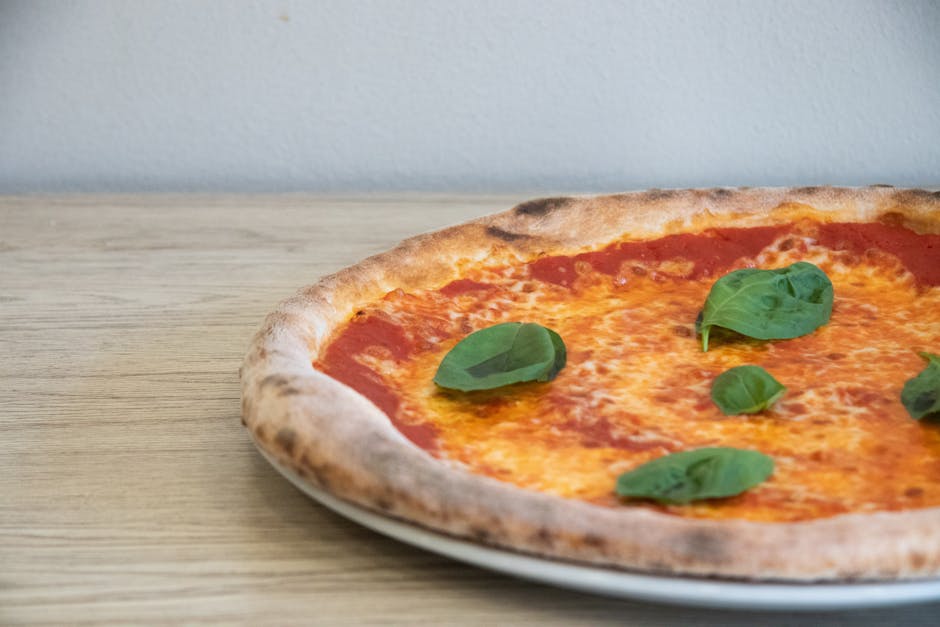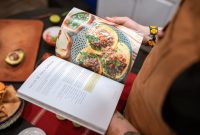
Rome, a city synonymous with history and culture, also boasts a vibrant culinary scene that continues to captivate food enthusiasts worldwide. As 2025 unfolds, the Eternal City offers an array of authentic Italian recipes and unforgettable dining experiences. This guide unveils Rome’s culinary secrets, ensuring your visit is filled with delectable discoveries.
The Heart of Roman Cuisine
At the core of Roman cuisine lies a deep respect for tradition and simplicity. The food is characterized by its humble ingredients, yet it delivers profound flavors. The rich history of Rome is reflected in its recipes, passed down through generations, each telling a story of the city’s past.
Traditional Roman Dishes You Must Try
When it comes to traditional Roman dishes, there’s no shortage of options. Here are some must-try favorites:
- Cacio e Pepe: A quintessential Roman pasta dish, Cacio e Pepe is simplicity at its finest. Made with just three ingredients – pecorino cheese, black pepper, and pasta – it exemplifies the beauty of Roman cooking.
- Carbonara: Unlike carbonara found elsewhere, the Roman version uses eggs, pecorino romano, guanciale, and black pepper, avoiding cream for a truly authentic taste.
- Saltimbocca alla Romana: This savory dish features tender veal wrapped with prosciutto and sage, cooked in a white wine and butter sauce.
- Carciofi alla Giudia: A specialty of the Jewish Quarter, this dish consists of deep-fried artichokes, resulting in a crispy and flavorful delicacy.
- Supplì: A popular street food, these are rice balls stuffed with mozzarella and lightly fried for a crunchy exterior and gooey center.
Exploring Local Markets and Food Tours
For an immersive culinary experience, visiting local markets and participating in food tours is essential. These excursions offer an opportunity to taste fresh produce, sample local delicacies, and gain insights into Roman food culture.
Renowned Markets in Rome
Rome is home to several bustling markets, each offering a unique glimpse into the city’s culinary heart:
- Campo de’ Fiori: Known for its vibrant atmosphere, this market is perfect for finding fresh produce, spices, and artisanal products.
- Mercato Testaccio: Located in one of Rome’s most authentic neighborhoods, this market offers an array of fresh meats, cheeses, and local specialties.
- Mercato Trionfale: One of Rome’s largest markets, it features a wide selection of fruits, vegetables, and typical Roman street food.
Food Tours for the Discerning Palate
Participating in a food tour can enhance your culinary knowledge and appreciation for Roman cuisine. Popular tours include:
- Trastevere Food Tour: This tour takes you through the charming streets of Trastevere, visiting traditional bakeries, trattorias, and gelaterias.
- Vatican Area Culinary Tour: Explore the neighborhood around the Vatican, known for its hidden culinary gems and authentic local flavors.
- Jewish Ghetto Food Tour: Discover the unique blend of Roman and Jewish culinary traditions in this historic district.
Modern Interpretations of Roman Classics
Rome is not only about tradition; it is also a hub of culinary innovation. Chefs are reimagining classic dishes, integrating modern techniques while respecting their roots.
Contemporary Roman Dining Experiences
Experience the evolution of Roman cuisine at these modern dining establishments:
- Pipero: Known for its contemporary take on traditional dishes, Pipero offers a refined dining experience with a focus on quality and presentation.
- Roscioli: Combining a deli, wine bar, and restaurant, Roscioli is famous for its exquisite selection of meats, cheeses, and a modern twist on Roman classics.
- Marzapane: This innovative restaurant is celebrated for its creative menus that highlight seasonal ingredients and imaginative flavor combinations.
Finding the Perfect Wine Pairings
No Roman dining experience is complete without the perfect wine pairing. Italy’s diverse wine regions offer endless options to complement your meal.
Essential Italian Wines to Sample
While in Rome, be sure to taste these quintessential Italian wines:
- Frascati: A crisp white wine from the Lazio region, Frascati is an ideal accompaniment to pasta and seafood dishes.
- Chianti Classico: This robust red wine pairs beautifully with rich meat dishes and hearty pastas.
- Brunello di Montalcino: Known for its complexity and depth, this red wine is a perfect companion to savory and bold flavors.
Where to Stay for a Culinary Vacation
To fully immerse yourself in Rome’s culinary landscape, consider accommodations that offer convenience and access to renowned dining locations.
Recommended Accommodations
- Hotel de Russie: Positioned near the Spanish Steps, this luxurious hotel offers exquisite dining options and proximity to many prominent restaurants.
- Hotel Campo de’ Fiori: Located in the heart of the market district, this charming hotel provides easy access to food stalls and eateries.
- Palazzo Manfredi: With stunning views of the Colosseum, this hotel features an exceptional rooftop dining experience.
Seasonal Delights and Food Festivals
Rome’s culinary calendar is filled with seasonal delights and food festivals, offering a chance to indulge in the city’s vibrant food scene.
Key Food Festivals in 2025
- Cacio e Pepe Festival: Celebrate Rome’s iconic pasta dish with culinary demonstrations, tastings, and competitions.
- Gelato Festival: Savor the finest gelato creations from local artisans and international chefs during this sweet celebration.
- Sagra della Porchetta: Enjoy this festival dedicated to porchetta, featuring local vendors, live music, and traditional Italian street performances.
FAQ
What is the best time of year to visit Rome for a culinary experience? Spring and fall are ideal, offering pleasant weather and numerous food festivals and events.
Are there vegetarian options available in traditional Roman cuisine? Yes, Roman cuisine offers several vegetarian dishes, such as cacio e pepe and carciofi alla giudia.
How do I choose the best restaurant in Rome? Look for places frequented by locals, check recent reviews, and explore neighborhoods known for their culinary offerings, like Trastevere and Testaccio.
What is a typical Roman breakfast? A typical Roman breakfast is light, often consisting of a cappuccino and a cornetto, which is a type of Italian croissant.
Can I book cooking classes in Rome? Yes, many cooking schools in Rome offer classes where you can learn to prepare traditional Roman dishes from experienced chefs.
Conclusion
Rome’s culinary scene is a testament to its rich history and vibrant culture. From traditional dishes to modern interpretations, the city offers a diverse palate for every food enthusiast. Whether you’re exploring markets, indulging in gourmet dining, or sipping on Italian wines, Rome promises a culinary journey that is nothing short of extraordinary. Plan your visit in 2025 to uncover these culinary secrets and savor the authentic flavors of the Eternal City.


